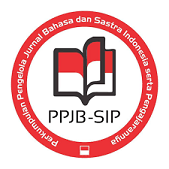KOMUNIKASI INTERPERSONAL GURU DAN SISWA DALAM PEMBELAJARAN TEKS ULASAN DI KELAS VIII 10 SMP NEGERI 2 SINGARAJA
DOI:
https://doi.org/10.23887/jjpbs.v7i2.11278Abstract
Penelitian ini bertujuan mendeskripsikan (1) pola komunikasi yang terjadi antara guru dan siswa (2) mendeskripsikan kecakapan komunikasi interpersonal guru dan siswa (3) kendala-kendala yang terjadi dalam komunikasi interpersonal guru dan siswa dalam pembelajaran teks ulasan di kelas VIII 10 SMP Negeri 2 singaraja. Subjek penelitian ini adalah guru dan siswa serta objeknya adalah komunikasi interpersonal. Penelitian ini menggunakan rancangan deskriptif kualitatif. Data dikumpulkan menggunakan metode observasi dan wawancara. Data dianaliis secara deskriptif kualitatif melalui tiga tahapan, yakni reduksi, penyajian, serta simpulan/verifikasi data. Hasil penelitian ini (1) pola komunikasi guru dan siswa adalah komunikasi banyak arah. (2) Kecakapan komunikasi interpersonal guru meliputi, berbicara, bertanya, membuka pintu komunikasi, menjaga sopan santun, cepat (tanggap, bertanggung jawab), perhatian dan kepedulian, memiliki empati, memberikan layanan, menyampaikan informasi, mendengarkan, dan sebagai konselor. Kecakapan komunikasi interpersonal siswa meliputi, berbicara, bertanya, membuka pintu komunikasi, menjaga sopan santun, meminta maaf, cepat (tanggap, bertanggung jawab), menyampaikan informasi, dan mendengarkan. (3) Kendala-kendala yang terjadi dalam komunikasi interpersonal guru meliputi, faktor komunikan rendah, tidak digunakan media yang tepat, perbedaan persepsi, komunikasi satu arah, waktu, dan suasana hati komunikan. Sementara itu, kendala yang dihadapi siswa meliputi, karakteristik komunikan, perbedaan persepsi, dan tidak ada respon.Kata Kunci : komunikasi interpersonal, guru, siswa, teks ulasan
In this research purposes to describe (1) communication patterns that occur between teachers and students (2) describe interpersonal communication skills of teachers and students and (3) constraints that occur in interpersonal communication of teachers and students in text review study in class VIII 10 SMP Negeri 2 singaraja. This research subject is teacher and student and the object is interpersonal communication. This research uses qualitative descriptive design. Data were collected using observation and interview methods. Data is analyzed descriptive qualitative through three stages, namely reduction, presentation, and conclusion / verification of data.The result of this research (1) communication pattern of teacher and student is the pattern of communication of many direction. (2) Interpersonal communication skills of teachers include speaking, asking, communication skills, keeping good manners, being quick (responsive, responsible), caring and caring, having empathy, providing services, conveying information, listening, and counseling. Interpersonal communication skills of students include, speaking, asking, opening communication doors, maintaining courtesy, apologizing, fast (responsive, responsible), conveying information, and listening. (3) Constraints that occur in teacher interpersonal communication include, low communicant factors, not used appropriate media, differences in perception, one-way communication, time, and mood communicant. Meanwhile, the constraints faced by students include, the characteristics of communicants, differences in perception, and no response.
keyword : interpersonal communication, teacher, student, review text
Published
2017-07-26
Issue
Section
Articles
License
Authors who publish with the Jurnal Pendidikan Bahasa dan Sastra Indonesia Undiksha agree to the following terms:- Authors retain copyright and grant the journal the right of first publication with the work simultaneously licensed under a Creative Commons Attribution License (CC BY-SA 4.0) that allows others to share the work with an acknowledgment of the work's authorship and initial publication in this journal
- Authors are able to enter into separate, additional contractual arrangements for the non-exclusive distribution of the journal's published version of the work (e.g., post it to an institutional repository or publish it in a book), with an acknowledgment of its initial publication in this journal.
- Authors are permitted and encouraged to post their work online (e.g., in institutional repositories or on their website) prior to and during the submission process, as it can lead to productive exchanges, as well as earlier and greater citation of published work. (See The Effect of Open Access)







